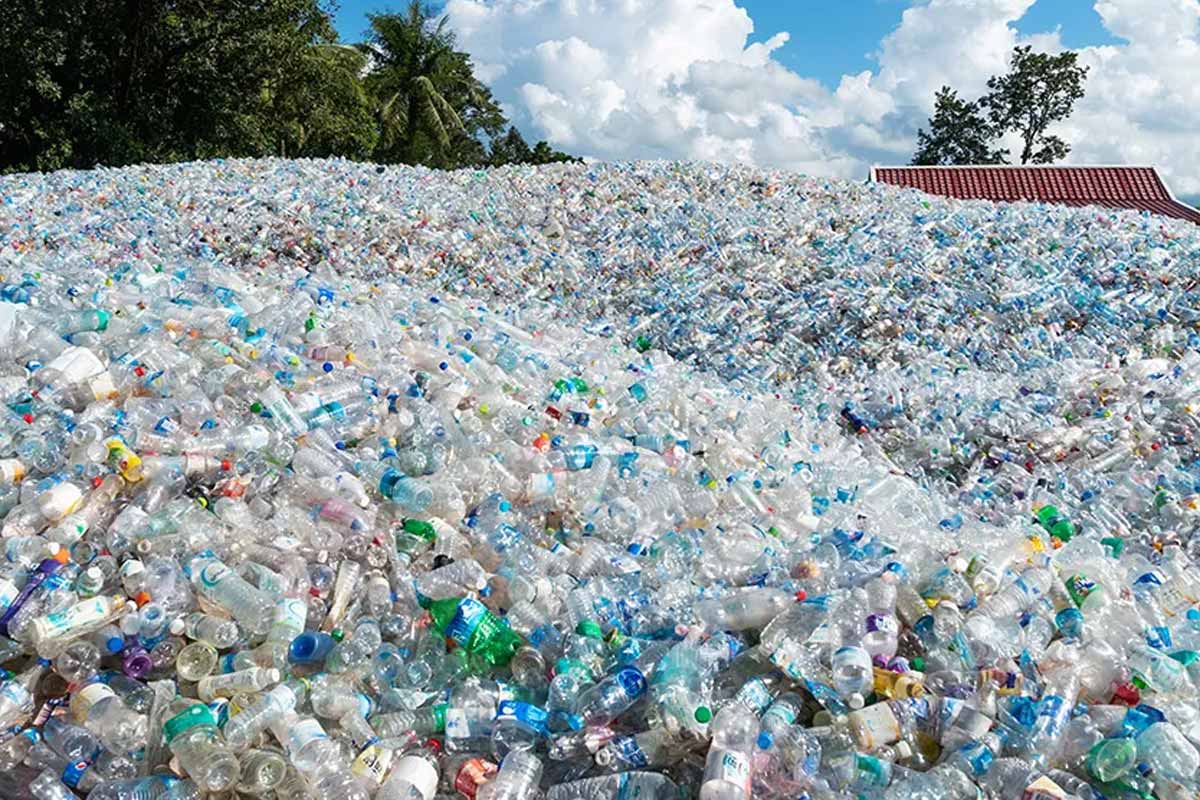A quiet shift is underway: researchers have found a way to turn trash into treasure with nothing more than air. In peer-reviewed work, Northwestern University chemists report a fast, selective route to unlock value from plastic that usually lingers for centuries. They use ambient humidity, a simple catalyst, and gentle heat to slice long polymer chains back into high-value feedstocks. The approach sounds disarmingly simple, yet it answers a stubborn recycling problem while opening a cleaner path to new materials.
Air moisture turns plastic into valuable building blocks
The team targets PET, the world’s most common polyester found in bottles and clothing. Under heat, ambient air provides just enough water to drive depolymerization, so plastic breaks into terephthalic acid, or TPA. That molecule is prized in industry, which means this route can plug directly into existing manufacturing, not a niche lab trick.
A molybdenum catalyst supported on activated carbon does the heavy lifting, because it weakens the right bonds along PET chains. The group reports a 94% degradation rate in about four hours, which is unusually quick for chemical recycling. Yield matters in practice, so clean, colorless TPA arrives ready for reuse with little downstream purification.
The reaction also gives acetaldehyde, an industrial solvent and precursor used in resins and flavors. That co-product adds value without undermining purity. While air humidity helps, extra liquid water slows the reaction, which shows the chemistry depends on a precise moisture balance. The elegance here lies in simplicity, not brute force.
How the catalyst works and why extra water slows it
Northwestern’s protocol leans on surface chemistry. Activated carbon disperses the molybdenum centers, so sites stay accessible. Because the air’s natural moisture adsorbs on the surface, the catalyst delivers water exactly where polymer bonds are primed to open. That design keeps energy use modest and the setup compact.
Researchers paraphrase it this way: the air has just enough water to make the reaction sing. Flooding the system, however, blocks active sites and dilutes key intermediates, so rates fall. In other words, more water is not better. The trick is exposure to moving air, not immersion, which also simplifies reactors.
Peer-reviewed findings matter because scale-up depends on reproducibility. Labs can copy the conditions, swap reactor sizes, and monitor conversion, acetaldehyde formation, and TPA purity. The method also answers a cost headache, since molybdenum is more available than precious metals and activated carbon is inexpensive, so plastic valorization can compete.
Real-world tests, from bottles to T-shirts
The group ran mixed samples to mirror real waste streams. The catalyst ignored non-polyester items while selectively breaking down PET, which reduces sorting steps that choke today’s facilities. That selectivity is key because manual triage adds cost and often fails in high-volume plants handling messy bales.
They tried clear bottles, colored containers, woven fibers, and T-shirts. Each time, output was pure, colorless TPA that can feed new polyester lines without quality loss. That helps designers close loops, because mechanical recycling often downgrades properties. Here, chemistry restores monomers, so performance returns to virgin standards.
The reaction’s by-product, acetaldehyde, has steady markets in chemicals and flavoring. That revenue can offset processing costs while improving plant economics. Because the pathway runs under air, facilities can adapt existing equipment more easily. A simpler retrofit lowers barriers for municipalities that struggle with plastic backlogs today.
Numbers that matter in the global waste crisis
Scale makes the case urgent. Global polymer output has doubled since 2000, and environmental monitoring stations track rising contamination across rivers, soils, and coasts. Wildlife ingests fragments, which move up food webs. Over time, those pieces weather into micro-particles that enter our bodies and create unknown risks.
The United States leads the world in per-capita waste yet recycles only about 5% of its discarded polymers. Most material lands in dumps or leaks into nature, where it persists. Because collection alone won’t solve this, chemistry that upgrades waste into money-making inputs can change incentives inside cities and companies.
A circular economy depends on design and infrastructure, while it still needs technology that preserves value. This method answers that need with high yields and clean outputs. The study’s first author, Naveen Malik, frames it as reuse over discard, which fits broader shifts like plant-based diets that cut footprint while reducing plastic burdens.
Selective action that targets plastic polyesters in mixed waste
Trials show the catalyst chooses polyesters even inside mixed bales, so operators avoid intensive pre-sorting. That single trait unlocks speed, because conveyor belts move faster when fewer hands intervene. The team plans to scale pilots for industrial runs, while engineers map reactor designs that keep airflow and heat uniform.
Innovation also advances on parallel tracks. While China deploys vast solar arrays and builds fusion research centers, this approach tackles the waste side of the climate puzzle. Quantum computing pushes materials discovery, too, which could reveal even better catalysts. Together, these lanes tighten loops from energy to matter.
Because the process restores monomers, manufacturers can make high-spec fibers and packaging again, not downcycled goods. That reduces extraction pressure on fossil feedstock. Over time, value streams bend away from landfills and toward production lines, so tax dollars stretch further and communities see less littered plastic across streets and shores.
Why this simple chemistry signals a practical shift in recycling
This is promising because it mixes lab elegance with street-level realism. Air does the dosing. The catalyst is affordable. The outputs are market-ready. While regulators push design standards, industry gains a tool that turns stubborn plastic into feedstock on a clock, not a century-long timeline. That combination feels like momentum.
